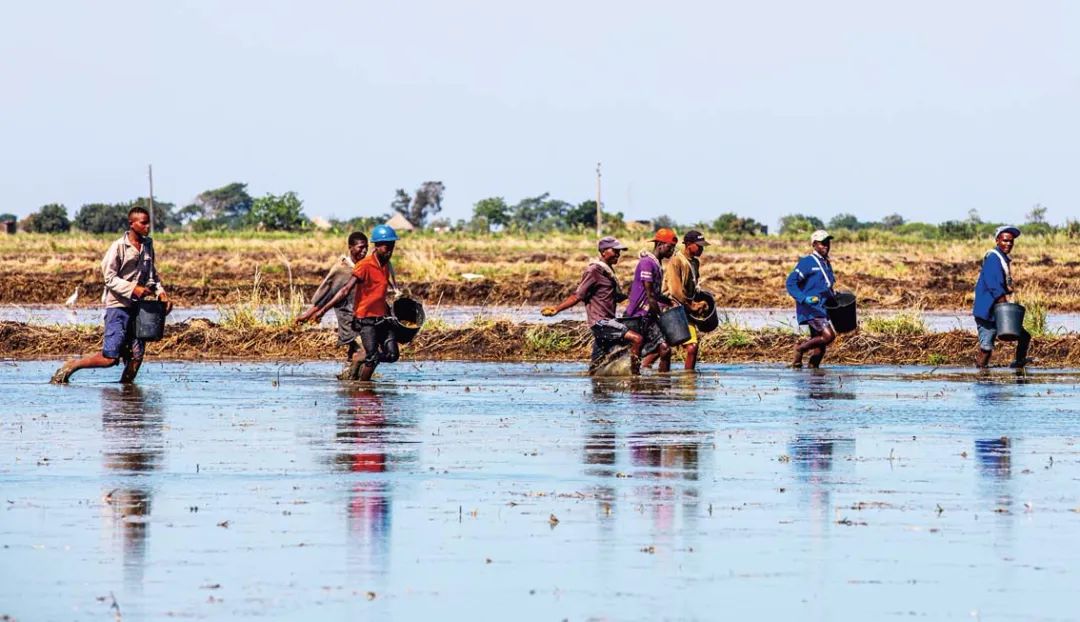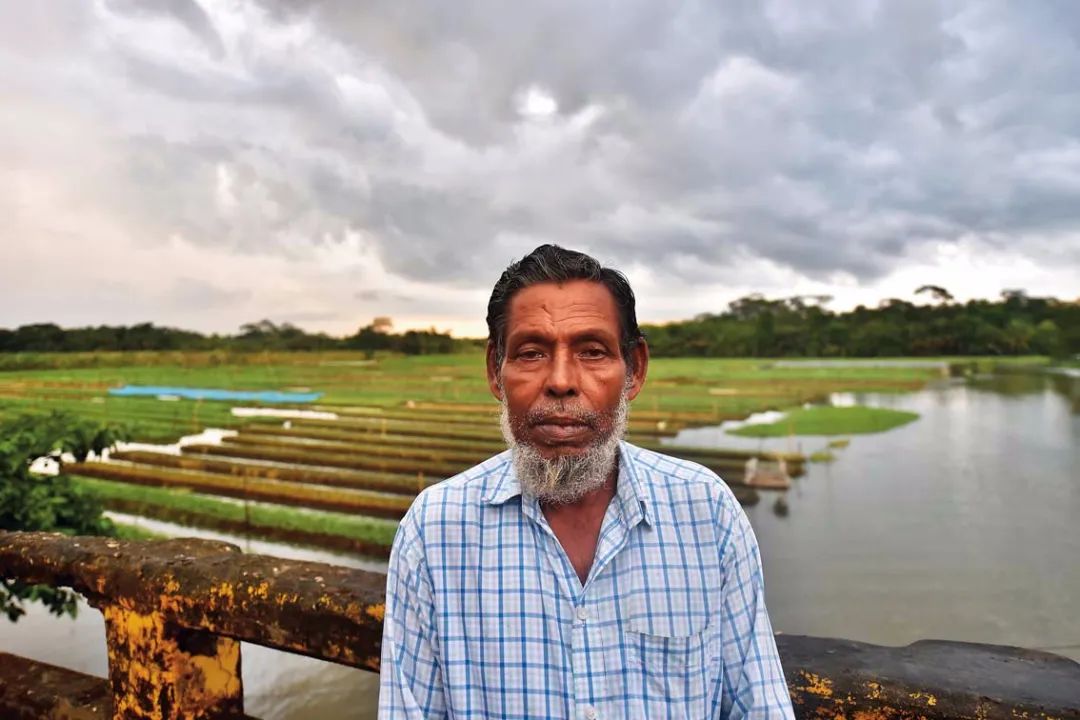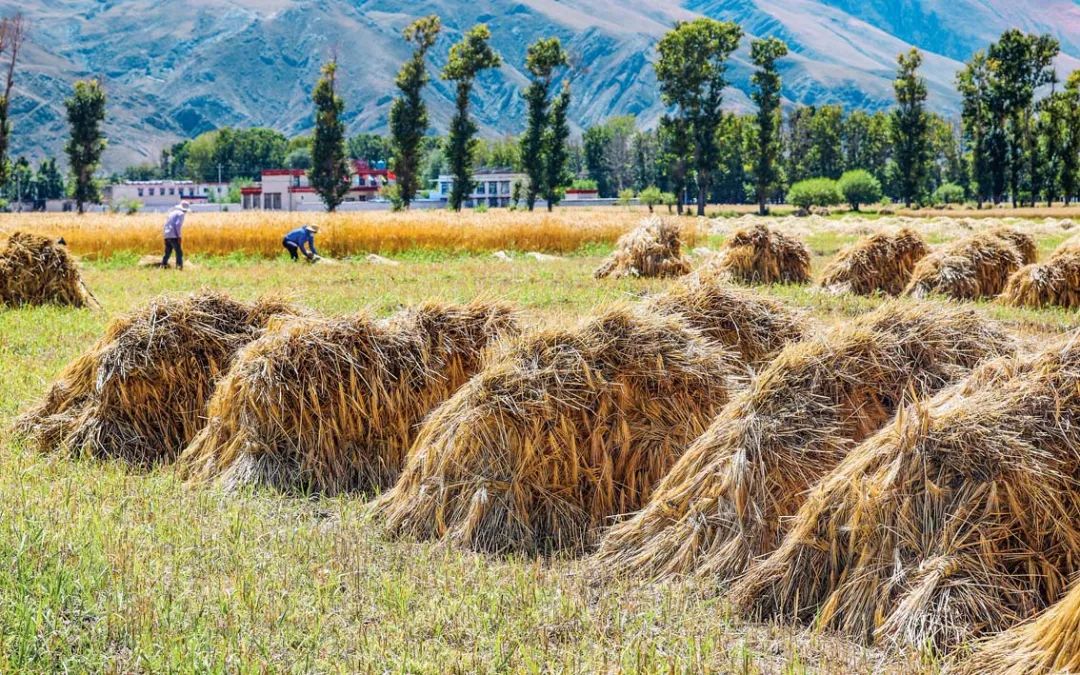The world's wheat and corn are reduced by 1.9%and 1.2%every 10 years?How to adapt to climate change in agriculture
Author:Look at the think tank Time:2022.09.26


In the past 100 years, climate change has caused significant changes in the geographical range and behavior of animals and plants. The increase in extreme weather has a serious impact on human production and life, especially agricultural development.
Facing the test brought by climate change, countries and international organizations around the world are actively taking action to enhance the adaptability and toughness of agricultural development to respond to climate change.

Chinese agricultural technology helps Mozambique improvement of food. The picture shows November 28, 2019, the cooperative farmers work in Zhang Yu/this magazine
Text | Liu Jing Niu Kunyu Institute of Agricultural Economics and Development, China Academy of Agricultural Sciences
This article is reproduced from the WeChat public account "Global Magazine" (ID: Globemagazine). The original first was released on September 23, 2022. The original title "The world's wheat and corn are reduced by 1.9%and 1.2%per 10 years? How to adapt to climate change in agriculture.
1
Climate change affects the global agricultural environment
The sixth evaluation report of the Special Committee for Climate Change of the United Nations (IPCC) pointed out that climate change has caused huge damage and increasingly irreversible losses to land, freshwater, coastal and ocean -ocean marine ecosystems, and affecting the world. The billions of people.
Extreme weather incidents have frequently exacerbated water resources and global food crisis. Since the middle of the 20th century, about 1/3 of the 200 major rivers around the world have decreased significantly, and wheat and corn have reduced production by 1.9%and 1.2%every 10 years, respectively.
In Africa, south of Sahara, drought greatly reduced food production and triggered a serious food crisis. Decreased precipitation, increased temperature, and drought causes the problem of crop disease and insect pests. Since the beginning of 2020, from Africa to South Asia, desert locust disasters have invaded many places around the world, causing irreparable losses to agricultural production in many countries. The decrease in precipitation and the occurrence of drought have also triggered the crisis of the livestock and poultry industry. Relevant research shows that the heat should stimulate the average milk production of American cows by 0.38%to 1.35%.
Climate change leads to a reduction in biodiversity and affects ecological safety. Climate change has changed the geographical distribution of many biological species, seasonal activities, migration models and diversity. The average species in some land areas moved 17 kilometers and 11 meters to the polar and high altitudes every 10 years.
IPCC's sixth evaluation report shows that a study of 976 plants and animals found that the cause of extinction of 47%of the extinction and plants is related to climate change. The reduction of species will reduce the ability of the ecosystem to provide services and reduce its ability to adapt to climate change. Evidence has shown that since the 1980s, artificial climate changes have doubled the area that was burned by wildfire in western United States. Frequent fires and ecosystems to store carbon storage may greatly increase the release of terrestrial carbon in the atmosphere, thereby triggering a vicious cycle of climate and ecosystems.

This is a peasant Xinhua News Agency/French Xinfa Xin, a farmer's crop in water farmland, which was shot in southern Bangladesh on September 26, 2021
2
Global action
As climate changes intensify, agriculture is affected.
In 2022, the arid and heat waves caused global food to reduce production, and the climate crisis forced the climate of the world forced countries to strengthen dialogue and cooperation.
Economic powers move from game confrontation to cooperation. Greater powers are often the main greenhouse gas emissions. In order to actively actively actively actively actively, the unity and collaboration of large powers is essential. Although encountering some setbacks and obstacles, such as the "Paris Agreement" that responded to global climate change in 2017, Australia refused to pay climate funds, the United States, Japan, and European countries were negative The crisis step by step, many national leaders have begun to change their positions and actively seek dialogue and cooperation.
In terms of agriculture, Brazil has firmly opposed the return of farmland to forests to announced that "stop illegally cutting forests by 2028"; in 2021, the United States, the European Union and the Organization have officially launched the global methane commitment, and proposed that methane discharge within 10 years will be discharged by methane emissions within 10 years. A decrease of about 1/3 of the initiative; China and the United States have frequently interacted in the field of climate change in recent years, sending positive signals to the international community.
The international convention and initiative build a governance system for multi -party dialogue. The United Nations Climate Change Conference has been held for 26 sessions so far, and the issues of agriculture in previous sessions have moved from principle, framework to specific and operable.
In 2017, the Twenty -three Conference of the Convention on the Framework of the United Nations Climate Change confirmed the importance of agriculture in implementing the Paris Agreement. Among them, the last plenary meeting requested the two affiliated institutions of the United Nations Climate Change Framework Convention to jointly deal with agricultural -related issues, and at the same time considering the vulnerability of agriculture for climate change and the way to achieve food security.
In November 2021, at the World Leadership Summit of the Convention on the Twenty -sixth Conference of the Contracting Council of the United Nations Climate Change Framework Convention, 12 developed economies, including the United Kingdom, had promised to provide $ 12 billion from 2021 to 2025 Public funds to help developing countries work hard to restore degenerate land and cope with mountain fires. 28 countries also promised to stop destroying forests in the trade of global food and other agricultural products (such as soybeans, cocoa, and olive oil). In the same month, the Palm Oil Round Table Initiative organized a virtual round table with the theme of "Climate Restoration: Make sure the future of sustainable palm oil", which brings together the main sound of the entire agricultural commodity field, that is, the use of technology to help improve the palm oil supply chain The transparency and traceability. Countries have also implemented domestic agricultural adaptive measures.
In 2021, the Ministry of Agriculture of the United States released the "Climate Smart Agriculture and Forestry: Report on the 90 -day Progress", which proposed strategic suggestions such as tracking monitoring, development of efficiency chemical tools, and the establishment of voluntary carbon markets.
In 2022, the Canadian government issued the "2030 Eatshift Subtraction Plan for 2030: The Next Actions on Canadian Clean Air and Powerful Economic Plan", and launched a $ 166 million agricultural cleaning technology plan to support improving energy efficiency, precision agriculture, biocontoral economy and other agricultural reductions in agriculture reduction Line technology.
The German "Climate Protection Law" stipulates that agricultural emissions in 2030 decreased by 14 million tons of carbon dioxide compared with 2014.
Italy vigorously promotes climate and smart agriculture, and uses new technologies such as Internet of Things, agricultural robots, drones, and other new technologies to optimize land management and monitoring, optimize water -saving irrigation and production technology, and provide certain special funding support.
Israel transforms tomatoes through biological engineering technology, and has now developed more than 50 varieties such as "cherry tomatoes". The modified tomato production can double, and the taste and storage resistance can be greatly improved.
3
Our responsibility and practice
China has always attached great importance to the impact of climate change, slowing and adapting, and is committed to promoting international and multilateral cooperation of global climate governance, actively promoting policies and actions to slow climate change, and won a good reputation at home and abroad.
For example, in the face of the "double carbon" goal of this century test, the central level system planning and overall deployment, in May 2021, a carbon peak carbon neutralized work group was established as guidance and overall planning to do a good job of carbon peak carbon carbon carbon carbon carbon carbon carbon carbon carbon carbon carbon carbon. Neutral coordination agency of neutralization. The Leading Group Office is located in the National Development and Reform Commission. In October 2021, the "Opinions of the CPC Central Committee and the State Council of the Communist Party of China on a complete and accurate and comprehensive implementation of the new development concept to do a good job of carbon peak carbon neutralization work", further clarify the overall requirements, put forward major goals, deploy major measures, and clarify the implementation path.
At the same time, China actively carried out international cooperation and foreign aid to reflect the responsibility of the great power. As the parties of the Paris Agreement, China has been actively participating in international collaboration adapting to climate change and carrying out South -South cooperation to adapt to climate change. For example, China-United Nations Food and Agricultural Organization (FAO)-South South-South Cooperation Project promotes environmentally friendly crop production systems in Africa. Since 1996, more than 1,000 Chinese agricultural technical experts have been sent to 37 countries to provide technical assistance.
On September 6, the harvesting team in Dangjie Village, Bianlin Township, Linzhou County, Tibet grabbed the wheat Jiang Fan Photo/Our Journal

China's agricultural reducing carbon work has also achieved significant results. At the national level, in 2020, the three major grain crop of rice, corn, and wheat of rice, and pesticide utilization rates reached 40.2%and 40.6%, respectively; the comprehensive utilization rate of straw, the comprehensive utilization rate of livestock and poultry manure, and agricultural membrane recovery rates reached 86%, respectively. , 75%and 80%. The application area of the national soil measurement formula fertilization technology has reached more than 1.9 billion acres, and the promotion and application area of new fertilizers such as slow -release fertilizer and water -soluble fertilizer has reached 245 million acres, and the application area of organic fertilizer is about 550 million acres. Under the implementation of a series of green operations, according to FAO statistics, China's agricultural greenhouse gas emissions have declined for three consecutive years since 2016.
At the local level, many demonstration projects and practices have also been carried out in China. Ye County, Henan Province, and Huaiyuan County, Anhui Province, took the lead in becoming a pilot of climate smart agriculture. It carried out the integration and demonstration of a series of climate adapting technologies such as farmland solid carbon emission reduction technology and new variety selection technology, and achieved positive results.
In addition, China vigorously develops new and new technologies to respond to climate change. On the one hand, the development of crops such as high temperature resistance, drought resistance, and disease -resistant pests, and on the other hand, strengthen the construction and promotion of agricultural infrastructure construction and water -saving agriculture.
For example, in terms of high temperature resistance of rice, Yuan Longping's team has developed the "tons of two excellent 900" high -temperature rice resistant rice. The rice can also be produced steadily at high temperature at 40 ° C. At the high temperature of 38.9 ° C, it has increased by 30% than other varieties. At the above extreme high temperature at 41.6 ° C, there is still a 55%strong rate, which can reduce the impact of global warming on food security.
In addition, some new technologies, such as the cross -fusion of biotechnology and information technology, are exerting the development and promotion of climate adaptive crops such as herbicide genetic crops, insect -resistant transgenic crops, salt -resistant crops, drought -resistant crops, and cold -resistant crops. Important role.
wx_fmt = png "data-nickName =" Looking for Think Tank "Data-ALIAS =" ZHCZYJ "Data-Signature =" Looking for Think Tank is established by Xinhua News Agency, and the national conditions and national policy research institutions under the Watch Weekly.The research network and "Watching" deepen the research of national policy research. Looking at the think tanks with decision-making institutions, authoritative research institutions at home and abroad, to give full play to the functions of consulting politics, theoretical innovation, public opinion guidance, social services, public diplomacy and other functions. "Data-FROM= "0" data-is_biz_ban = "0" /> Uncle Ku Welfare


- END -
The United States is too overbearing, so that Russia does not allow Russia to participate in the UN General Assembly, it is time to move the headquarters out of New York

Seeing that the 77th UN General Assembly will be held in New York on September 20t...
Talking about the world 丨 The thief shouting to catch the thief to the West is the "debt trap" manufacturer

Recently, some developing countries such as Sri Lanka are facing economic difficul...